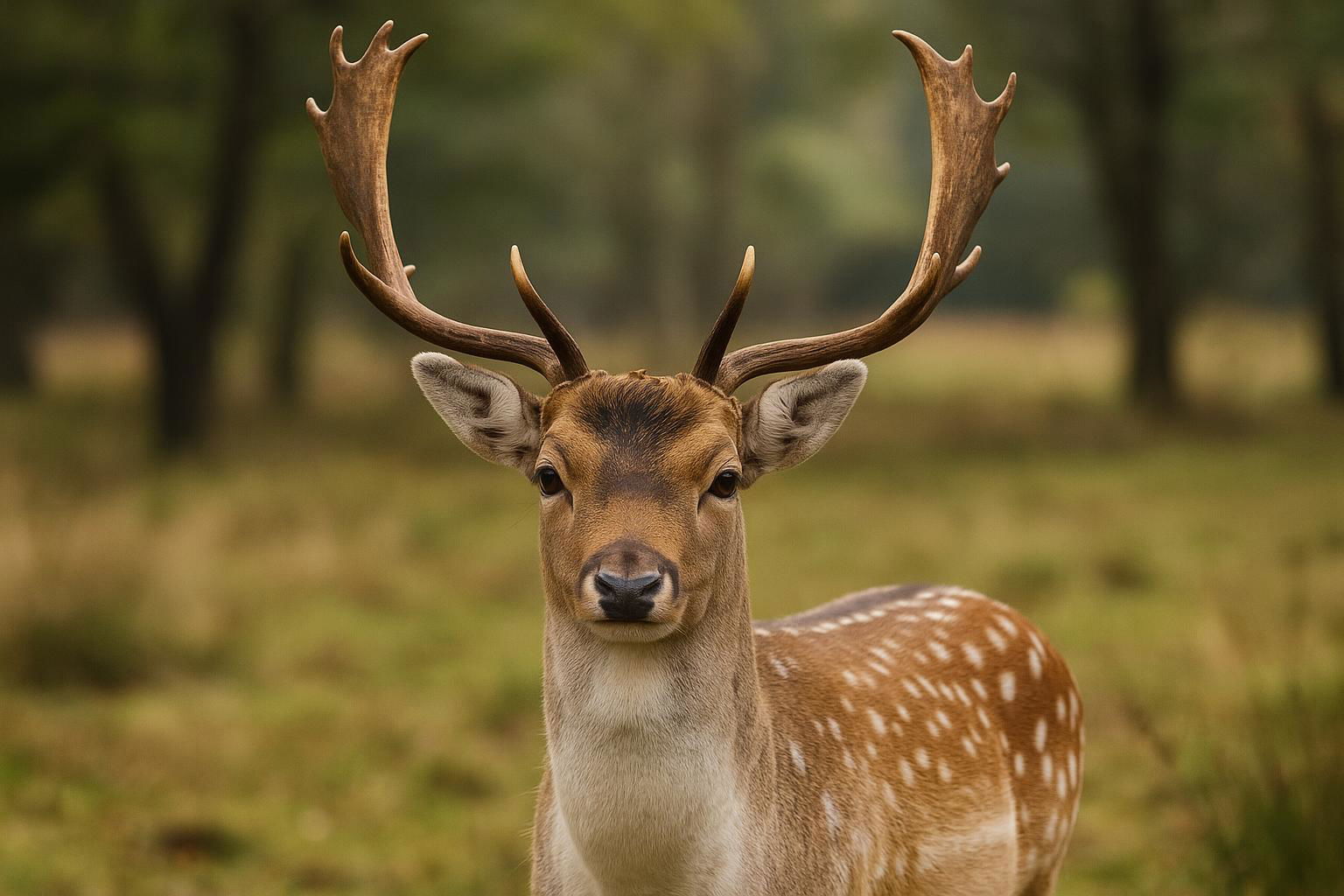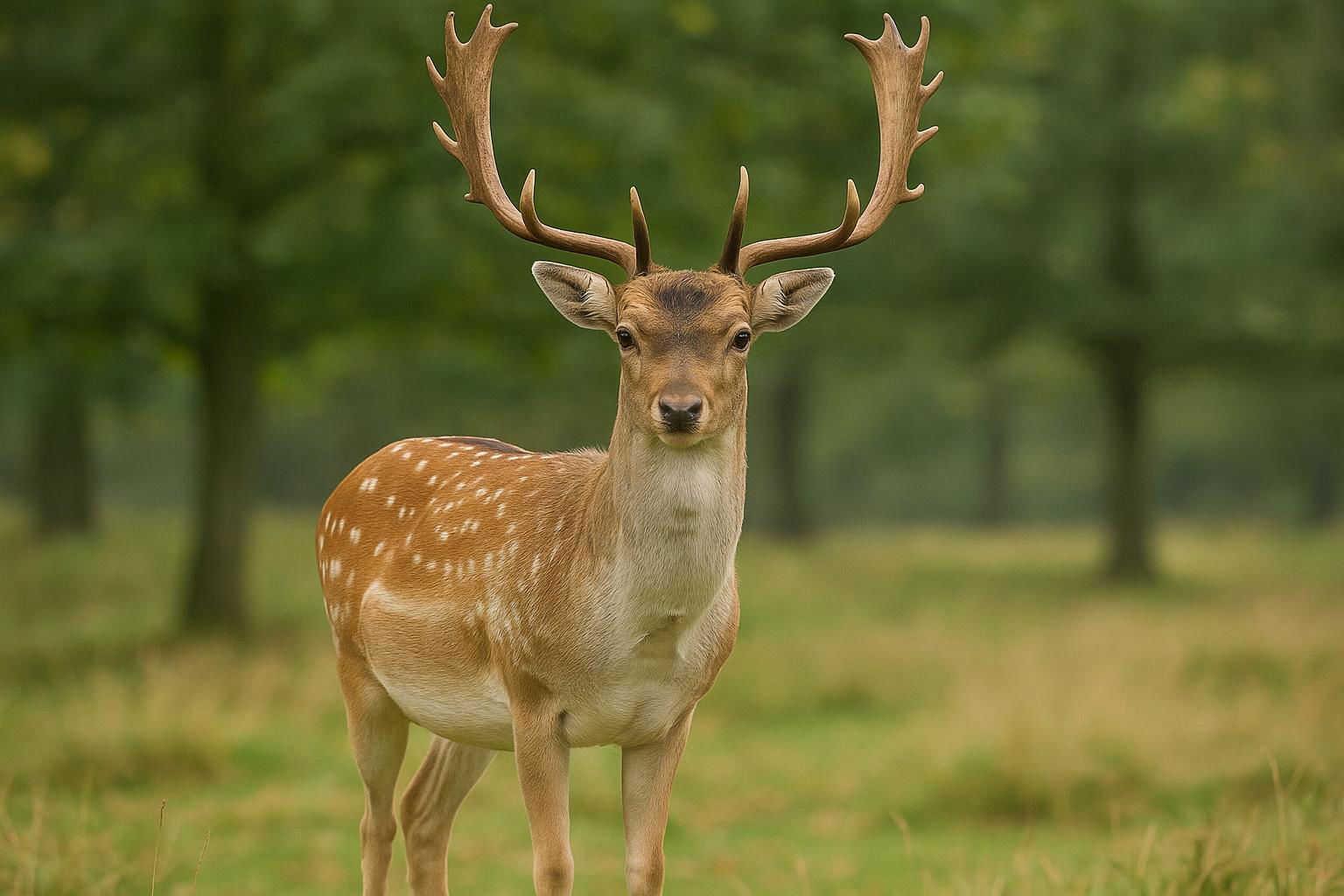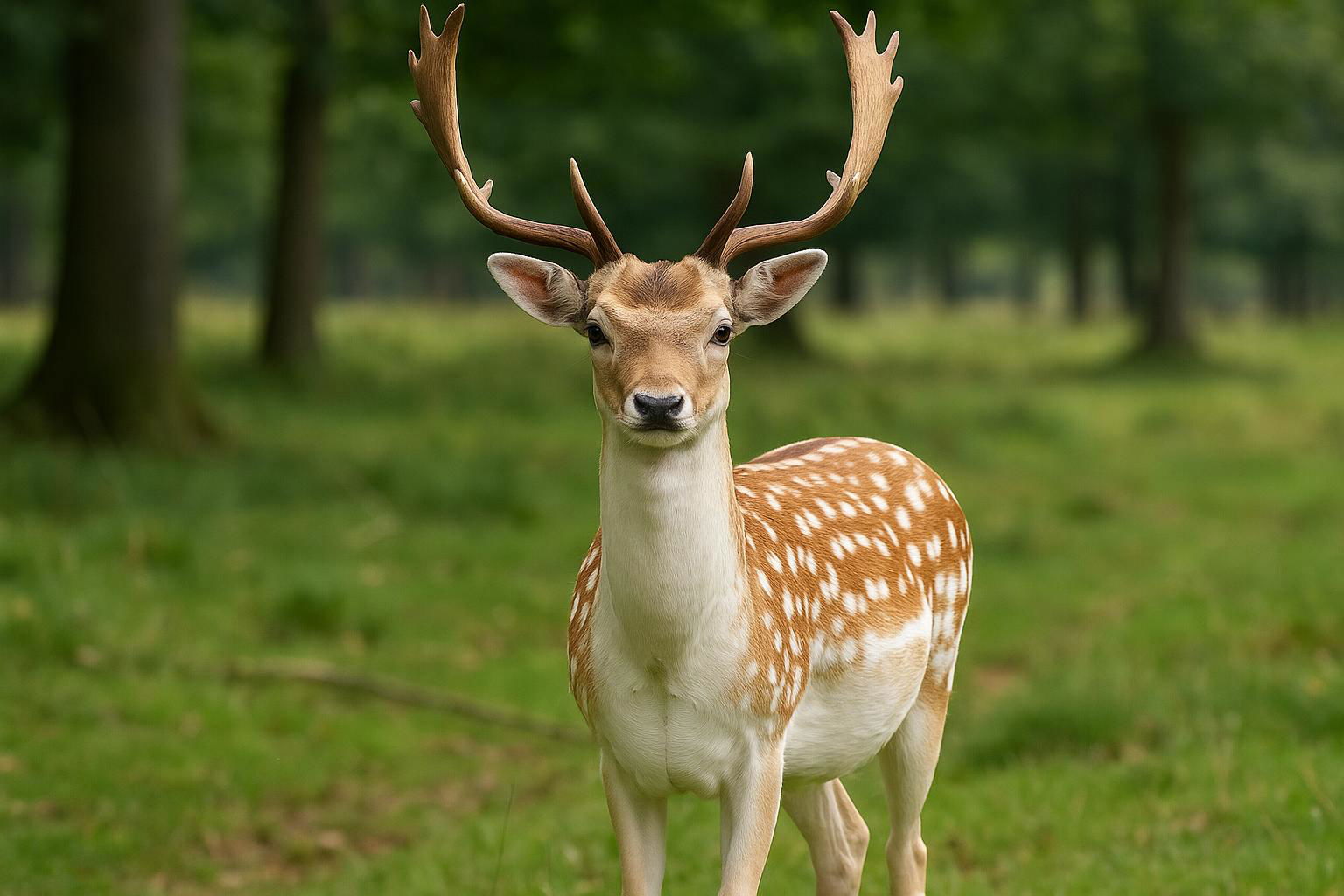
Fallow Deer
Dama dama
The Fallow Deer (Dama dama) is a medium-sized deer species known for its distinctive appearance and adaptability to various habitats. Native to Europe and parts of the Mediterranean, this elegant species has been introduced to many other regions, including North America and Australia. A defining feature of fallow deer is their coat, which varies from a light chestnut color with white spots in summer to more subdued grayish-brown tones during winter. They also exhibit a notable color variation among individuals, with some displaying white, black, or menil (pale with faded spots) coats.
Both sexes have long, slender legs and a distinctive long tail, but only the males, known as bucks, develop impressive palmate antlers. These antlers are broad, with many points, resembling a flattened look similar to those of moose, and are shed and regrown annually. Fallow deer are social animals, often forming herds that change in size and composition with the seasons; however, bucks are typically solitary or form smaller bachelor groups except during the rut, or breeding season.
Known for their agile and graceful movements, fallow deer easily navigate wooded landscapes, open grassy areas, and mixed habitats. As browsers, their diet consists mainly of grasses, herbs, leaves, and a variety of fallen fruits and nuts, making them adaptable feeders. This adaptability, coupled with their resilience to diverse habitats, has contributed to their successful establishment across various regions around the world. Fallow deer hold a special place in history due to their association with ancient hunting practices and as a common species in deer parks and estates throughout Europe.

 All Species & Breeds
All Species & Breeds
 Highland Cattle
Highland Cattle
 Miniature Donkeys
Miniature Donkeys
 All Species Directory
All Species Directory
 Highland Cattle in Virginia
Highland Cattle in Virginia
 Miniature Donkeys in Texas
Miniature Donkeys in Texas














